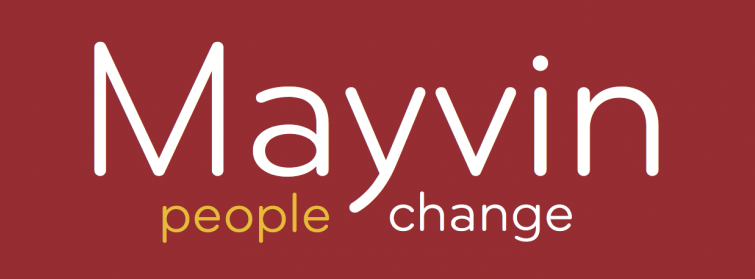There is a risk that as consultants we may collude with a prevailing view that behaviour in organisations is driven by rationality and logic. While many of us might wish that this were so, experience in organisations indicates that less obvious drivers, which originate below the surface of what we consciously know, may offer a better explanation.
A group of consultants from different organisations and nationalities are engaged to work with a delegation of leaders from Bosnia, Croatia and Serbia. They accompany the delegates to a neutral venue in Sweden where they will meet for three days. The consultants are prepared for significant conflict between the delegates, reflecting strife in the old Yugoslavia and the profound religious and cultural divides.
Two days in and the delegates are apparently working collaboratively. Between the consultants however there is open warfare.
The vignette above comes from an independent consultant, who was one of the warring colleagues. He made sense of these events by reference to that part of the human psyche that is usually ʻin the darkʼ from our conscious selves. The unconscious is like a black hole without physical substance that exerts a powerful influence on anything in its sphere. Based on Freudʼs original thinking, the unconscious of each individual is a repository of desires and impulses that the maturing child has learned to control. The process of learning to cope with these raw wishes is a dynamic one that gives shape to the individualʼs personality. To keep these hidden impulses in check, an individual may unknowingly use a range of defence mechanisms.
Building on Freudʼs work, Melanie Klein and her followers describe how the ego is formed as the infant develops defence mechanisms against anxiety about death or annihilation. These may then be reproduced in the adult as a defence against anxiety and help shape our relationships as individuals and in groups. Whether repressed sexuality as was central to Freud, or fear of annihilation lie at the heart of unconscious, the defence mechanisms associated with reducing anxiety or controlling unacceptable impulses are familiar to most of us.
In the example above, the consultant understood the conflict among the professional as an example of the defence mechanisms of projective identification. He believed that the delegates were mindful of their roles and responsibility to find solutions at home. This did not of course lessen the differences between them, nor the hatred and mistrust they probably felt. They - undoubtedly unconsciously - had split the professional duties and laudable aims of their meeting off from their hostile feelings and projected those feelings onto the group of consultants around them. When the consultants discussed this interpretation among themselves they were able to resolve the conflict they felt to each other, and address the delegates at a different level; exposing and acknowledging the dislike and suspicion between them and by this releasing energy for the real task they had met for.
The example shows how psychodynamic approaches to organisations centre on the idea that apparently rational behaviour hides feelings, concerns or forces of which the players are unaware.
Defence mechanisms in individuals may become patent in a variety of ways, such as resistance to change when on all logical counts the change would appear to be beneficial and interpersonal hostility that is disproportionate to any obvious difference. Defence mechanisms are manifest not only in relations between individuals or groups but at the wider level of the organisation.
Thoughts about the unconscious for OD practitioners
- With instinct and training; develop the ability to hear the music behind the words spoken
- Consider unconscious motives when behaviour doesnʼt match expectations
- Learn to listen to your feelings, which can be a mirror of what is happening to others or an indication that someone is projecting those feelings on to you
- Weigh up the consequences of surfacing something against the effects of not doing so
- Identify the issues you find yourself reluctant to discuss
- Identify the issues others seem reluctant to discuss
- With rationalisations, assess whether it is a reason or just an excuse
- If we work with self-awareness then we have more response-ability and can respond more authentically and passionately
- Encouraging emotionality draws energy away from rational patterns and can allow creative contents from the unconscious to come to the surface
- Is the company open to this kind of work; will this evoke further defensiveness and lead to rejection of the OD practitioner?
During the OPEC crisis in the 1970ʼs, imported cars from Asia that were smaller and used less fuel threatened the previously secure American automobile market. The Americans responded with an attempt to defend itself and ʻfightʼ against the enemy through import quotas and legislation rather than tackle the real challenge cars from Asia were presenting in terms of their greater understanding and response to the market conditions of potential fuel shortages. (Adapted from Morgan 1996)
Understanding the powerful effect of unconscious processes can unlock situations where dysfunctional behaviour is embedded in organisations, particularly during periods of uncertainty, instability or recession when teams or divisions react to anxiety by regression. Bion (1961) noted how at such times, groups turn their focus away from the task in hand, just when application may be most needed. He describes three types of basic assumption group (dependency, pairing, fight-flight) where the members appear to share some common belief from which their feelings stemmed.
Each will have a ʻleaderʼ, but this may be an idea or an object rather than an individual and in the pairing group will be non- existent and an expression of hope. When the group feels helpless it may seek support from outside (ʻdependencyʼ), often by becoming dependent upon a designated leader or by focusing back on some symbol of a successful past. Other groups may manifest an air of hopefulness or anticipation (ʻpairingʼ). To sustain these feelings, the group will look towards an unborn leader, a Messiah who must never arrive but who represents the hope of saving the group from the feelings of destructiveness or despair that lie at the opposite pole from the expressed expectation in the group. When fearful or aggressive, a group may try to avoid something by fight or flight, as in the example of the US car industry given above. The leader of a fight-flight group will be an individual whose leadership offers the opportunity for either aggression or escape; if it does not, he will be ignored. In each of these basic assumption group responses, the group becomes deflected from taking action that may resolve the task.
Thoughts about basic assumption groups for OD practitioners
Spotting them
Does the language of the group, its expressed aims and energy focus more on the internal and/or external relations of the group rather than demonstrate a constructive approach to the work agenda it faces?
Working with them
Develop the detachment and ability to detect group dynamics beneath the content. Basic assumption processes themselves can be very hidden and hard to perceive amidst a lot of deflection such as jovial chitchat and apparent rather than real attention to the task.
In this model the practitioner strives to remain distant the group - in it but not part of it.
Psychoanalytic concepts identifying different styles of neurotic behaviour, that is behaviour that is designed to reduce anxiety, have been applied to whole organisations. Kets de Vries and Miller (1984) distinguished the characteristics, motives, fantasies and dangers of five major neurotic behaviour styles: the paranoid, compulsive, dramatic, depressive and schizoid and related these to common types of organisation function and dysfunction. For example, the compulsive style would mark an organisation that had control as its major fantasy. This would be the company obsessed with perfectionism, ritual and rigid, extensive control mechanisms for internal monitoring. Relationships too are understood in terms of dominance and submission. Control is more important than human relationships so there would be hierarchical, centralized and formalised systems. The structure and strategy will be aimed at reducing uncertainty and avoiding the unfamiliar. The organisation is unlikely to be able to adapt and will hold firmly to familiar strategies that become outdated in changing environments.
A willingness to look below the surface and consider how unconscious drivers may be at play extends the practitionerʼs understanding of groups and organisation and supports greater effectiveness in their practice.

